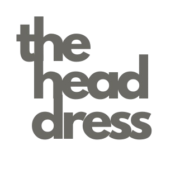1. Introduction: The Power of Symbols in Human Culture
Symbols have been a cornerstone of human communication for thousands of years, serving as visual representations that transcend language barriers. Across civilizations—from the intricate hieroglyphs of Egypt to the mythic emblems of Greece—symbols function as cultural identifiers and convey complex meanings succinctly. Today, these ancient visual languages continue to influence contemporary aesthetics, shaping everything from art and fashion to branding and digital media.
■ From Ancient Rituals to Modern Design
■ Greek Mythology in Visuals
■ Modern Design Trends
■ Symbols in Gaming and Entertainment
■ Psychological and Cultural Impact
■ Future Dimensions of Ancient Symbols
■ Conclusion
2. Historical Roots of Symbols and Their Meanings
The earliest known symbols appeared in prehistoric times, primarily as cave paintings and simple glyphs used in rituals. As societies grew complex, symbols acquired layered meanings linked to religion, power, and social hierarchy. For example, Egyptian hieroglyphs combined phonetic and ideographic elements, serving as a sacred writing system that preserved their mythology and culture for millennia.
Notable ancient symbols include the Greek labyrinth, representing journey and complexity, and the Egyptian ankh, symbolizing life and immortality. These symbols often held spiritual significance, but their visual language has persisted, influencing modern logos and motifs. The enduring legacy of these symbols underscores their universal appeal and deep-seated cultural resonance.
3. From Ancient Rituals to Modern Design: The Evolution of Symbol Usage
Originally sacred or ceremonial, symbols gradually transitioned into tools of branding and artistic expression. The Renaissance revival of classical motifs, such as Greek columns or mythic creatures, exemplifies this shift. Today, corporate logos distill complex ideas into simple, recognizable symbols, like the swoosh of Nike or the golden arches of McDonald’s, exemplifying how ancient visual language informs commercial branding.
Ancient motifs are often reinterpreted in modern design, blending historical significance with contemporary aesthetics. For instance, tribal patterns inspired by ancient cultures are now prominent in fashion, while geometric symbols rooted in antiquity are favored in digital interfaces.
4. Case Study: The Symbolic Language of Greek Mythology in Modern Visuals
Greek mythology provides a rich tapestry of symbols representing deities, virtues, and concepts. Zeus, the king of gods, symbolizes power and authority, often depicted with a thunderbolt. Such symbols have been adopted in modern branding to evoke strength and leadership.
Contemporary artists and designers incorporate mythological symbols to communicate deeper meanings. For example, the modern branding of “Le Zeus”—a popular gaming slot—uses imagery inspired by Greek gods to suggest dominance and excellence. You can explore this modern interpretation of ancient symbolism I finally tried the new L3 ZEUS—a testament to how timeless symbols continue to inspire new entertainment forms.
5. Modern Design Trends Drawn from Ancient Symbols
Current design trends often lean toward minimalism, where complex ancient symbols are simplified for clarity and versatility. Geometric motifs inspired by ancient architecture or mythic patterns are prevalent in digital media, emphasizing clarity and symbolic power.
Cultural fusion is also evident, where designers blend symbols from different eras and cultures to create novel aesthetics. For example, combining Egyptian motifs with modern digital art results in vibrant, culturally rich visuals that resonate globally.
6. The Role of Symbols in Gaming and Entertainment
Mythological symbols are widely used in gaming, especially in slot machines and themed entertainment. These symbols evoke familiarity and excitement, tapping into subconscious associations of power, adventure, and mystery.
The “Le Zeus” slot game serves as a recent example, integrating ancient Greek symbols to create an immersive experience. Such design choices heighten player engagement and reinforce brand identity, illustrating how ancient symbolism continues to shape modern entertainment.
7. Psychological and Cultural Impact of Using Ancient Symbols Today
Symbols evoke subconscious responses—trust, authority, safety—which are vital in branding. For instance, the use of a thunderbolt in logos can subconsciously suggest power and reliability.
Culturally, ancient symbols carry layers of meaning that can foster a sense of shared history or identity. However, modern reinterpretations must respect cultural origins to avoid misappropriation, which can lead to ethical dilemmas and miscommunication.
“Understanding the cultural roots of symbols ensures respectful and meaningful design that honors their legacy.”
8. Non-Obvious Dimensions: The Future of Ancient Symbols in Design
Digital innovation, including augmented reality (AR), opens new avenues for embedding ancient motifs into interactive experiences. Imagine AR apps that reveal mythic symbols layered into modern environments, bridging past and future.
Symbolic design also plays a crucial role in cultural preservation, storytelling, and education—transforming static symbols into dynamic narratives that engage global audiences. Yet, caution must be exercised to prevent cultural misappropriation, ensuring respectful and authentic use of ancient motifs.
9. Conclusion: The Enduring Legacy and Future of Ancient Symbols in Design
Ancient symbols continue to shape our visual language, serving as bridges between history and modernity. Their deep meanings and aesthetic appeal make them timeless tools for communication and branding.
A thorough understanding of their historical contexts enriches contemporary design, fostering authenticity and cultural respect. As technology advances, the integration of ancient symbols into innovative media promises exciting possibilities for storytelling and cultural preservation.
“Design that respects the past while innovating for the future creates a meaningful dialogue across generations.”

